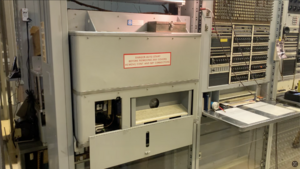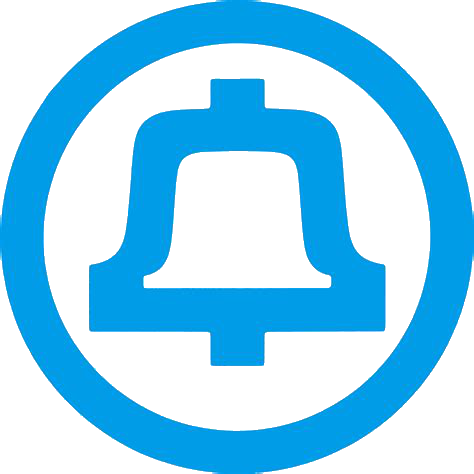Trouble Recorder

A trouble recorder is a device that punches perforated cards to indicate trouble in a crossbar telephone system. Similar to the earlier trouble indicator, the trouble recorder is called in by common control circuits such as markers, transverters, and pretranslators whenever a problem is encountered while placing a call. After being connected to the circuit in trouble through the Master Test Connector (MTC), the trouble recorder punches and ejects a card that contains information that can be used by maintenance workers to find and repair faults.
Trouble recorders are also used on tests made by maintenance workers. When running a test, a craftsperson can request a detailed record of their test, which will be produced on demand by the recorder.
Origin
The trouble recorder was an improvement on the earlier trouble indicator design used in Panel and 1XB exchanges. In contrast with the trouble recorder, the trouble indicator took the form of a panel of lamps that stayed lit until dismissed by a craftsperson. Each time trouble was encountered, the lamps had to be manually recorded by a worker, and then released so that subsequent troubles could be displayed. When problems arose in quick succession, this method of reporting proved insufficient for quick diagnosis. Many troubles were lost if the lamp panel was not cleared quickly, and much time was spent recording the output of the lamps on paper forms.
During the development of the No. 5 Crossbar, the engineers sought an improved trouble reporting system, resulting in the trouble recorder. It was later used in Crossbar Tandem (XBT) systems and the 4A Toll Crossbar.
Technical Details
The trouble recorder contains 120 punches, 60 in the front, and 60 in the back. Trouble cards are shuttled through the recorder one line at a time by a geneva mechanism. At each line, the card pauses, and some combination of the 120 holes are perforated. Two lines of 60 holes can be perforated at one time, which means that the 18 line card must step forward and stop nine times before it is ejected from the machine.
Since the total number of possible holes in the card is 1080 or higher (depending on the exact type of card), and with room for only 120 punches in the machine, the data for which holes to punch must be sent to the trouble recorder two lines at a time. This is done by scanning relays in the Master Test Connector (MTC) that operate while a record is being taken. The scanning relays contain 30 contacts each, and operate in groups of four, which equals 120 possible contacts for all of the magnets in the recorder. After a pair of lines is perforated, the card is shuttled one step forward, and the next set of four scanning relays is operated, which closes 120 new data leads to the recorder, which will cause some of 120 different holes to be punched in the adjacent lines.
Control of the recorder's state, and the state of the scanning relays is handled by sets of cams inside the recorder. Each cam set is driven by a specific part of the recorder, and transmits or receives state information from other parts of the system. Some of the cams are driven directly by the motor itself, while others are moved only while a card is actively shuttling through the machine.
Trouble Cards
The information punched in trouble cards can be divided into six major groups:
- the equipment included in establishing the connection
- the type of connection being established
- how far the various circuit operations had progressed before the trouble occurred
- information as to the specific test that has indicated trouble
- information which is helpful or necessary in determining the source of the trouble, such as the identification of the calling line, the called line, the trunk, and the channel through which the connection is established
- the time the trouble occurred
This information comes from a variety of sources within the switching equipment, but chiefly, it comes from the marker and transverter (if equipped). Markers and transverters are equipped with checking circuits that continuously validate the data they are being asked to handle. If any of these checking circuits report an irregularity, the trouble recorder is called in.
Trouble cards are printed with punch designations to make it possible to match the punches to a specific bit of information. Cards from various types and vintages of switching equipment use different form numbers to indicate what equipment they are to be used with. For example, cards used in the No. 5 Crossbar at the Connections Museum must be form E-4393, as any other cards will have the wrong designations printed on them.
